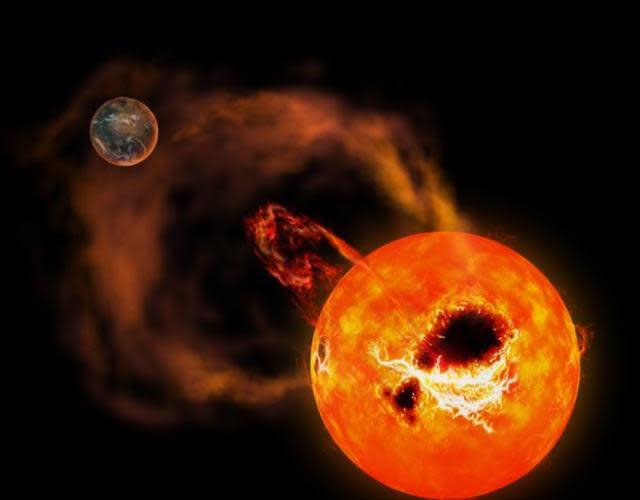Scientists see 'superflare' 20 times more powerful than our Sun's in the sky

Scientists have spotted a dramatic "superflare" in the sky, which is 20 times more powerful than those on our Sun.
The intense explosion on the surface of a relatively nearby star was seen by a new instrument in Japan.
Such flares can have important and dramatic effects on Earth, and are related to magnetic storms that could potentially cause disaster for life on our planet.
But they are also so rare on our Sun that scientists have little opportunity to study them. Instead, they hope to look elsewhere in the universe in an attempt to understand the mysterious behaviour of stars.
Getting a fuller picture of such explosions could help predict superflares from our Sun, explain some of its still unknown processes, and even help us understand how they are related to the occurrence of life on other planets.
“Solar flares are sudden explosions that emanate from the surfaces of stars, including our own Sun,” Kosuke Namekata, first author of a paper in Publications of the Astronomical Society of Japan describing the study, said in a statement.
“On rare occasions, an extremely large superflare will occur. These result in massive magnetic storms, which when emitted from our Sun can affect the Earth’s technological infrastructure.”
The researchers discovered the flashes after a week of exploration of AD Leonis, a red dwarf that is cooler than our Sun and has more flares. While they expected to see a number of explosions on the surface, they were surprised to find a superflare on their first night of looking.
“Our analyses of the superflare resulted in some very intriguing data,” said Namekata.
In all, they detected 12 stellar flares on the star. The brightest of them was 20 times larger than those from our own Sun, the scientists said.
The star was detected with the new 3.8 meter Seimei Telescope, which is run by Kyoto University and located on a hilltop near the city. The researchers hope to use it to find yet more dramatic and extreme space events.
"More information on these fundamental stellar phenomena will help us predict superflares, and possibly mitigate magnetic storm damage here on earth," said Kazunari Shibata, leader of the study.
"We may even be able to begin understanding how these emissions can affect the existence -- or emergence -- of life on other planets."
Read more
Scientists find 'stream' of stars that seem to come from elsewhere

 Yahoo Finance
Yahoo Finance 